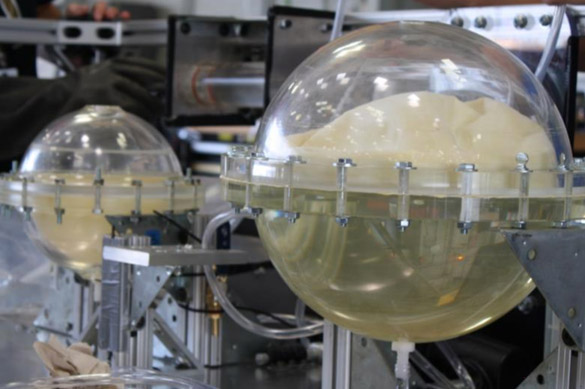Advancing Diaphragm Modeling Technology for Propellant Management
PI: Steven Collicott, Purdue University
PI: Steven Collicott, Purdue University

- TA02 In-Space Propulsion Technologies
High-acceleration spaceflight missions require use of diaphragms to control propellants. Future comet retrieval or rendezvous, on-orbit servicing, etc., missions can not rely on small accelerations. Modeling of the dynamics of mixed liquid and deformable solid motion remains computationally expensive, so simplifications are sought. One such simplification for design relies on a nondimensional parameter for diaphragm and liquid interactions and this needs to be advance to TRL-6.
The data from a previous flight and this flight will establish two certain values of a simple parameter based on diaphragm structural characteristics and liquid properties as the division between the three regimes of stiffness and liquid impact. Flights in 2011 produced data inefficiently, leaving the primary question unanswered and TRL approaching 5. TRL 6 will be achieved after the flight plus knowledge of performance differences from traditional technology. Testing to reach TRL 7 or expanding
The technology is relevant to the low-gravity conditions of spaceflight, including LEO, asteroid, lunar, Martian, and other missions.
Technology Details
-
Selection DateREDDI-F1-14 (Apr 2015)
-
Program StatusCompleted
- 2 Parabolic
Development Team
-
PISteven Collicott
-
Organization
-
SponsorPurdue University

